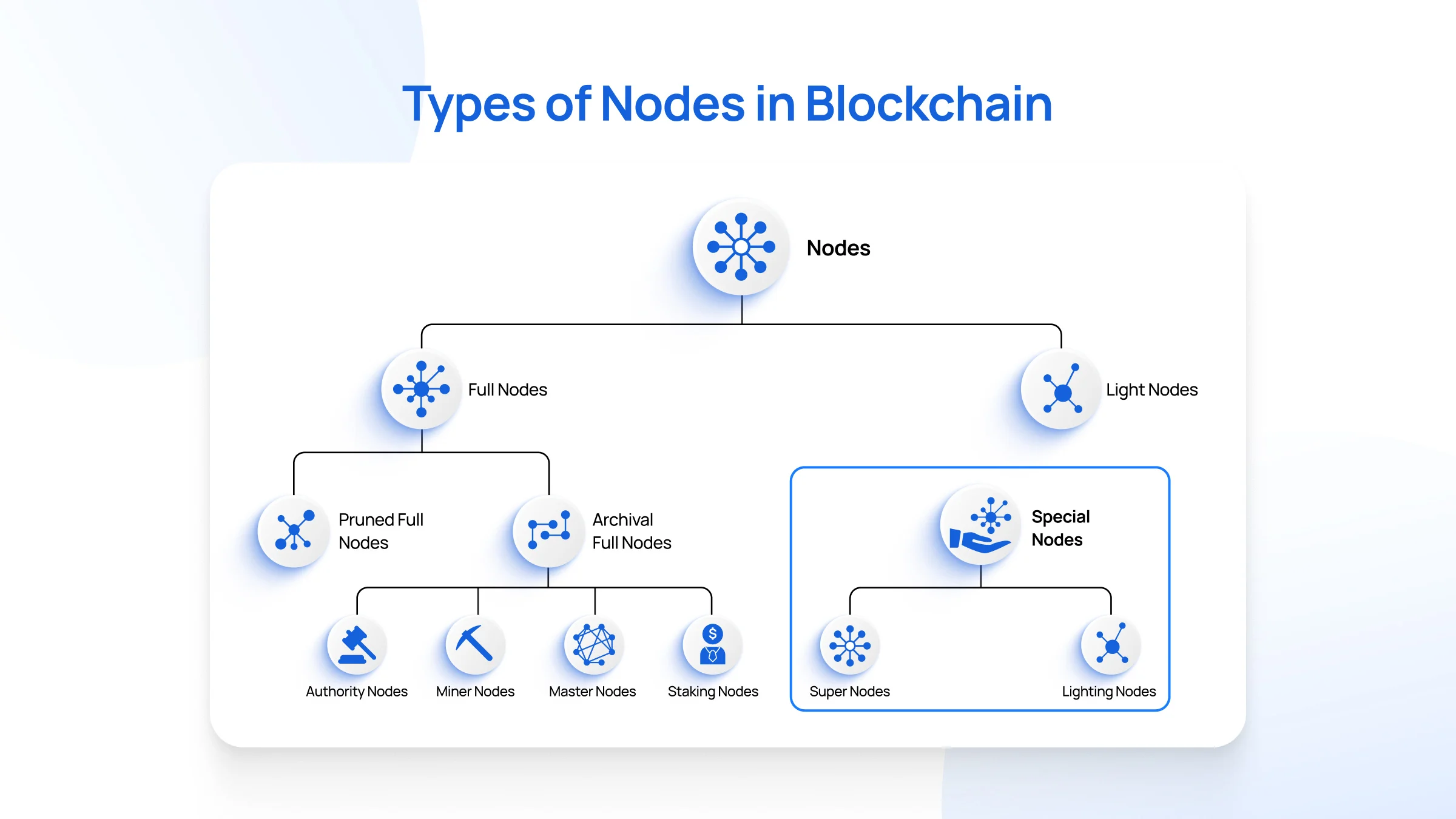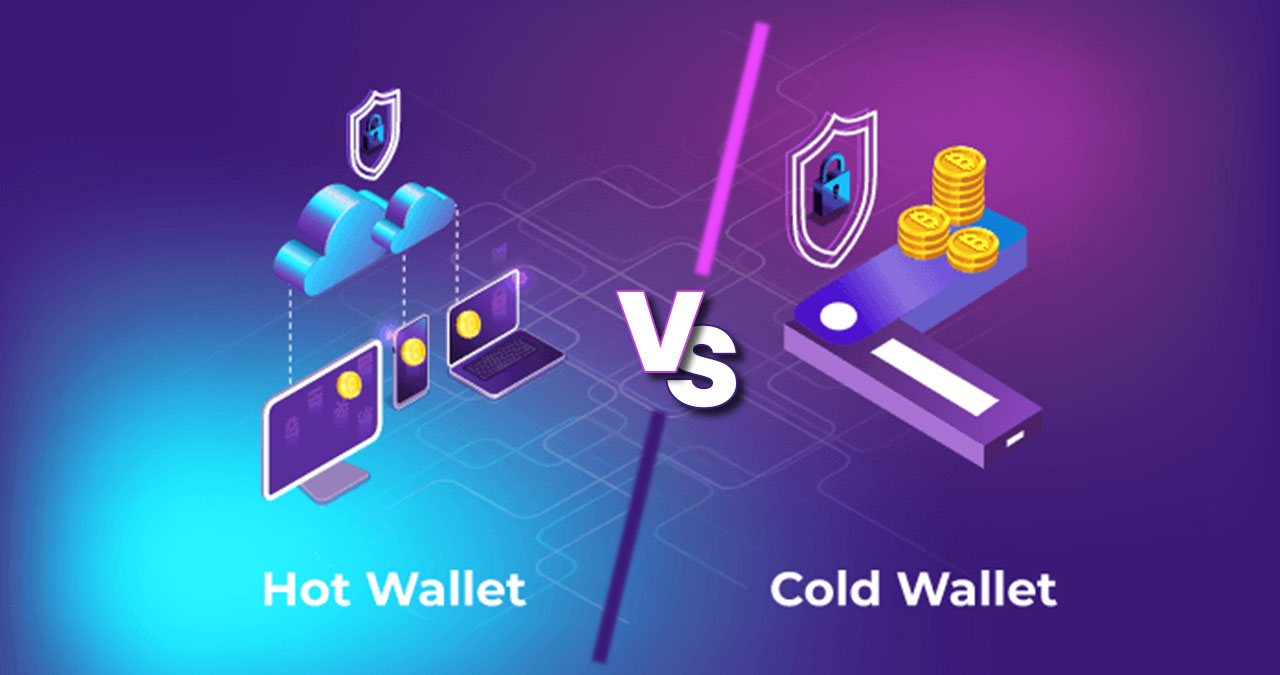🧩 The Role of Nodes in Blockchain Technology: Full Overview
Blockchain is often described as a decentralized ledger that records transactions across a distributed network of computers. But what are these computers? In the context of blockchain, they are called nodes, and they play a vital role in keeping the network secure, transparent, and operational. Without nodes, a blockchain would not exist.
In this article, we’ll break down what nodes are, their types, how they function, and why they are critical to any blockchain ecosystem.
📌 What is a Node?
A node is any device (usually a computer) that connects to the blockchain network. It participates in the blockchain by maintaining a copy of the distributed ledger and, depending on its type, may also verify transactions, participate in consensus, and broadcast data to other nodes.
In simpler terms, nodes are the infrastructure that stores, verifies, and communicates data on the blockchain.
🏗️ The Functions of a Node
Every node serves a unique purpose, but the core responsibilities of nodes include:
1. Maintaining the Ledger
Nodes keep an up-to-date record of all transactions. This ensures that no single point of failure exists, as every node has a backup of the blockchain.
2. Validating Transactions
Nodes verify transactions to ensure they follow the rules of the blockchain. For example, they check:
- Are there enough funds?
- Are signatures valid?
- Is the data format correct?
3. Participating in Consensus
In networks like Bitcoin and Ethereum, certain types of nodes (mining or validator nodes) help agree on the state of the blockchain through consensus mechanisms like Proof of Work (PoW) or Proof of Stake (PoS).
4. Propagating Transactions and Blocks
Nodes relay information to other nodes. When a new block is created, it is broadcast to all nodes, ensuring the blockchain remains synchronized.
🔍 Types of Nodes
Not all nodes are created equal. Here’s a breakdown of the different types of nodes in a blockchain:
1. Full Nodes
- Stores the entire history of the blockchain.
- Verifies all rules and transactions independently.
- Essential for decentralization and security.
Example: Bitcoin Core client is a full node software.
2. Light Nodes (or SPV – Simplified Payment Verification Nodes)
- Do not store full blockchain history.
- Only download block headers to verify transactions using Merkle proofs.
- Used mostly in mobile wallets and light applications.
3. Mining Nodes
- Full nodes that also participate in mining (Proof of Work).
- Compete to solve cryptographic puzzles and add new blocks to the blockchain.
- Rewarded with block rewards and transaction fees.
4. Validator Nodes
- Used in Proof of Stake (PoS) blockchains like Ethereum 2.0, Solana, or Cardano.
- Validate transactions and propose new blocks based on the amount of cryptocurrency staked.
5. Masternodes
- Common in blockchains like Dash.
- Provide specialized services such as private transactions or instant transactions.
- Require a significant deposit (collateral) to operate.
🌐 How Nodes Communicate
Nodes in a blockchain form a peer-to-peer (P2P) network:
- Each node connects to multiple other nodes.
- When a transaction is broadcast, it gets passed from one node to another.
- This decentralized communication model ensures that no single node is in control.
Benefits of P2P communication:
- Censorship resistance
- Fault tolerance
- Redundancy and data availability
⚖️ Nodes and Consensus
The consensus mechanism is the protocol by which nodes agree on the current state of the blockchain. Here’s how nodes are involved:
- In Proof of Work: Nodes (miners) compete to solve a complex puzzle. The winning node gets to propose the new block.
- In Proof of Stake: Validator nodes are chosen based on the amount of stake they hold. They propose and validate new blocks.
- In Delegated Proof of Stake: Token holders vote for a few nodes to validate transactions on behalf of the network.
Without nodes actively participating in consensus, double-spending and network manipulation would become possible.
🔐 Security Role of Nodes
Nodes play a key role in maintaining the security of the blockchain:
- They validate all transactions according to the protocol rules.
- They prevent invalid or malicious transactions from being added.
- Full nodes resist Sybil attacks (fake identities) by enforcing consensus rules.
The more full nodes in a network, the more secure and decentralized the blockchain becomes.
🛠️ Running a Node
Anyone can run a node, but the requirements vary depending on the blockchain:
For Bitcoin:
- At least 500+ GB of disk space.
- A stable internet connection.
- Bitcoin Core software.
For Ethereum:
- Use clients like Geth or Nethermind.
- Disk space can exceed 1 TB for full history.
- Requires syncing with the chain, which may take hours or days.
Benefits of running your own node:
- Enhanced privacy: No need to rely on third-party data.
- Full control: Verify transactions independently.
- Support the network: Help decentralize and strengthen the chain.
💡 Real-World Examples of Node Roles
Here are a few scenarios where nodes are essential:
- Wallet Services: Wallets rely on light or full nodes to fetch balance and broadcast transactions.
- Exchanges: Centralized exchanges run their own full nodes for each listed cryptocurrency.
- DeFi Protocols: DeFi apps on Ethereum interact with full nodes to execute smart contracts securely.
- NFT Platforms: Use nodes to validate token ownership and minting processes.
⚠️ Risks and Challenges for Nodes
Running and relying on nodes does come with some limitations:
- Storage requirements: Full nodes require large and growing disk space.
- Bandwidth usage: Constant syncing and propagating of data uses network resources.
- Legal & regulatory risk: In some jurisdictions, operating blockchain nodes could face scrutiny.
Despite this, nodes remain critical to a truly decentralized and trustless blockchain system.
✅ Summary: Why Nodes Matter
| Feature | Role |
|---|---|
| Ledger Storage | Keep a copy of blockchain history |
| Validation | Verify transactions and blocks |
| Consensus | Help agree on network state |
| Security | Resist attacks and bad actors |
| Availability | Ensure continuous operation |
| Decentralization | Remove single points of failure |
In conclusion, nodes are the backbone of the blockchain. Whether they’re validating transactions, maintaining the ledger, or enabling decentralized apps, nodes ensure that the blockchain functions as a transparent, secure, and decentralized network.




